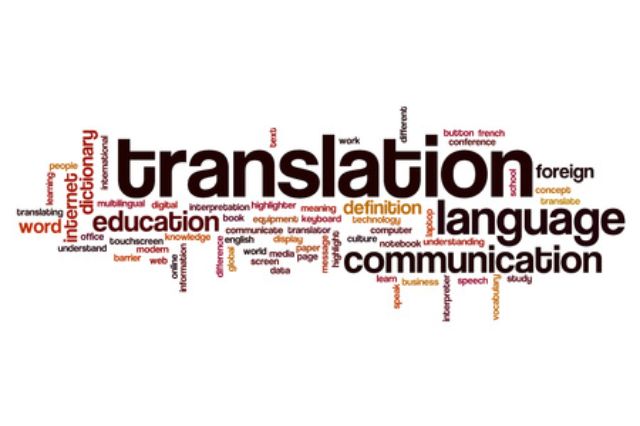Education
The Ultimate Chores Guide for Your Children

As parents, it’s our responsibility to equip our children with the skills they need for adulthood, and money management is an important one. One great way to teach money management skills to your little one is through hands-on experience. Paying children for completing chores such as setting the table, clearing away their toys, or washing the car can give them an opportunity to practise managing money.
This approach has multiple benefits for both parents and children. It helps children develop a strong work ethic, respect for money earned, and builds character and self-esteem. It also allows parents to recognise and reward their children for their contributions. This method of teaching the value of money and the importance of hard work through pocket money for chores can be beneficial for children’s financial education. Should you successfully teach your children the importance of money management then considering how you set up investment accounts for your children is incredibly important to ensuring their money is also working harder for them for their futures.
Paying children to do chores also teaches them:
- Basic life skills
- How to listen and follow instructions
- Importance of taking care of things
- Teamwork
Ultimate chores for children
Many parents question the benefits of assigning chores to their children. But in fact, chores can be an excellent tool to teach children responsibility and foster a sense of community within the household. It also prepares them for adult life by encouraging good habits of cleanliness and organisation. Additionally, completing chores can give children a sense of pride and accomplishment.
When deciding on chores for children, it’s important to consider their age and level of responsibility. Give them the time to master the task and be understanding if they make mistakes.
The most important thing is that they give it their best shot. Some common chores for different ages include:
Chores list for Kids under 6 years old
As your child prepares to start their school journey, now is an ideal time to introduce them to a chore-based allowance system. Not only will they earn their own pocket money, but they will also learn valuable lessons about saving even before formal education begins.
Simple chores that your child can handle with parental supervision at this age include:
- Watering the plants
- Putting away toys after playing with them
- Brushing teeth in the morning and before bed
- Making their bed
These tasks will not only help with keeping the house clean and tidy, but it also teaches them responsibility, time management and the value of hard work.
Chores list for Kids under 7-12 years old
As your child enters school, they will likely encounter new opportunities to spend their pocket money, such as in the school cafeteria or bookshop. This is an important time to teach them about the importance of managing money wisely, as it is finite.
Children of this age may be able to handle chores more independently, but still require some parental supervision to ensure that they are completed properly. One way to balance independence and supervision is to involve them in household chores as your little assistant.
Examples of tasks that they can handle include:
- Washing and drying the dishes
- Tidying their room
- Helping to clean the house
- Helping with cooking tasks such as washing vegetables and measuring ingredients
- Taking care of the family pet by walking the dog or feeding them regularly
- Getting ready for school
- Homework
Chores list for Kids under 13+ years old
As your child enters early adolescence, they will likely need more pocket money as they spend more time at school and with friends. To accommodate this, you may consider increasing the amount they can earn from chores or offering bonuses for completing tasks unprompted. This can encourage them to take a more active role in maintaining the house.
Examples of chores that can earn money include:
- Sweeping, mopping and vacuuming the floor
- Taking out the trash
- Tutoring younger siblings or cousins
- Running errands
- Doing laundry
- Tidying their room
Conclusion
Giving children age-appropriate weekly tasks, such as washing and drying the dishes, clearing away toys, or doing the laundry, and paying them for completing them has plenty of benefits for both parents and children. Not only can it help children to increase their self-esteem and build character, but it also helps them to develop a strong work ethic, respect the art of earning money and teaches valuable money management skills. Getting to grips with managing income is a crucial life skill and by understanding this from an early age will set them up for success in life.
Education
Translation Archaeology: Unearthing Ancient Languages Through Modern Expertise


Have you ever wondered how ancient languages are brought back to life?
Imagine stepping into the shoes of a linguist, armed with modern expertise, as you embark on a journey of translation archaeology. With each deciphered script, you unearth the secrets of civilizations long gone.
From the Rosetta Stone to the Dead Sea Scrolls, these linguistic detectives use cutting-edge techniques and technology to unlock the mysteries of the past.
Join us as we delve into the world of translating ancient languages, revealing the fascinating history that lies beneath the surface.
The Role of Linguists in Decoding Ancient Scripts
Linguists play a crucial role in decoding ancient scripts by applying their modern expertise. As a linguist, you possess the knowledge and skills necessary to unravel the mysteries of forgotten languages and scripts. Your understanding of linguistic patterns, grammar, and phonetics enables you to decipher the meanings behind ancient texts.
Using your expertise, you carefully analyze the structure of ancient scripts, identifying recurring symbols and patterns. By comparing these symbols to known languages, you can make educated guesses about their meanings and context. Through your meticulous examination, you are able to piece together the puzzle of the past, shedding light on the customs, beliefs, and histories of ancient civilizations.
One of the most fascinating aspects of your work is the ability to recognize linguistic evolution. Languages change over time, and by examining ancient scripts, you can trace the development of linguistic systems. This understanding allows you to bridge the gap between ancient scripts and modern languages, enabling you to decipher texts that were once considered indecipherable.


In addition to your linguistic expertise, you also rely on technological advancements to aid in the decoding process. Digital imaging techniques, computer programs, and databases of linguistic information all contribute to your ability to decode ancient scripts more efficiently and accurately.
Through your work as a linguist, you are able to unlock the secrets of the past, bringing ancient civilizations back to life through their written words. Your dedication to understanding and preserving these languages ensures that the knowledge and wisdom of our ancestors will not be lost to the sands of time.
Techniques for Translating Ancient Texts
Using cutting-edge methods, scholars can decipher and interpret ancient texts. When faced with the challenge of translating these ancient languages, they employ a variety of techniques to unravel the mysteries of the past.
One such technique is comparative linguistics, where scholars analyze similarities between known languages and the ancient script. By identifying common words or grammatical structures, they can begin to piece together the meaning of the text.
Another method is the use of bilingual texts or dictionaries, which provide a valuable resource for understanding the vocabulary and grammar of the ancient language.
Additionally, scholars may employ statistical analysis to identify patterns in the text, such as word frequencies or recurring phrases, which can shed light on the language’s syntax and grammar.
The advancement of technology has also greatly aided in the website translation services. Optical character recognition software can now scan and digitize ancient texts, making them more accessible for analysis and interpretation. Machine learning algorithms can also be used to assist in deciphering unknown characters or symbols.
With these techniques, scholars are able to unlock the secrets hidden within ancient texts, allowing us to gain a deeper understanding of our past.
Modern Technology and Its Impact on Ancient Language Translation
With advancements in technology, you can now easily digitize and analyze ancient texts, providing valuable insights into the languages of the past. By utilizing modern tools and techniques, scholars are able to unlock the secrets hidden within these ancient writings, shedding light on the complexities of ancient languages.
One of the main benefits of technology in the field of ancient language translation is the ability to digitize ancient texts. Gone are the days of painstakingly transcribing and manually deciphering ancient manuscripts. Now, with the click of a button, these texts can be transformed into digital formats, making them more accessible and easier to study.
Furthermore, technology allows for the analysis of these digitized texts in ways that were once unimaginable. Through the use of powerful algorithms and machine learning, scholars can now extract and analyze linguistic patterns, syntax, and grammar from these ancient languages. This not only aids in the translation process but also provides a deeper understanding of how these languages evolved over time.
In addition, technology offers the opportunity for collaboration and sharing of research. For example, English to Japanese translator work was tough but now it is possible through AI and Machine learning. Scholars from around the world can easily access and contribute to digital databases of ancient texts, allowing for a more comprehensive and accurate analysis of these languages.
Challenges and Pitfalls in Translating Ancient Languages
Despite the advancements in technology, there are still numerous challenges and pitfalls when trying to translate ancient languages. Even with all the tools and resources available today, deciphering ancient scripts and languages remains a complex and daunting task.
One of the main challenges is the lack of context and understanding of the culture and society in which these languages were used. Ancient languages often have unique grammatical structures and vocabulary that are not found in modern languages, making translation a difficult endeavor.
Another challenge is the preservation of ancient texts. Many ancient scripts have been lost or damaged over time, making it difficult to piece together the full meaning of the texts. In some cases, only fragments of texts are available, leaving gaps in our knowledge and understanding.
Furthermore, there is often a lack of available experts in ancient languages. The study of ancient languages is a specialized field, and finding individuals with the necessary expertise can be challenging. This shortage of experts can hinder progress in translating and understanding ancient texts.
In addition to these challenges, there are also pitfalls to be aware of when translating ancient languages. Misinterpretation of symbols or misreading of ancient characters can lead to inaccurate translations. The use of incorrect grammar or vocabulary can also distort the meaning of the original text.
Overall, while technology has undoubtedly improved our ability to translate ancient languages, there are still significant challenges and pitfalls that must be overcome. It requires a combination of advanced technology, linguistic expertise, and a deep understanding of ancient cultures to successfully decipher and translate these ancient languages.
The Significance of Translating Ancient Languages in Understanding History
Deciphering ancient languages through accurate translations provides invaluable insights into the history of civilizations. When you engage in the process of translating ancient languages, you embark on a journey of discovery, unearthing the secrets and stories of the past. By unlocking the meaning behind ancient texts and inscriptions, you gain a deeper understanding of the beliefs, customs, and daily lives of those who came before us.
Through translation, you are able to piece together the puzzle of history, connecting dots that were once scattered and fragmented. You become a bridge between the past and the present, bringing ancient civilizations back to life through the power of language. With each word you decipher, you unravel the mysteries of lost cultures, shedding light on their achievements, struggles, and aspirations.
Moreover, accurate translations enable you to delve into the thoughts and ideas of ancient thinkers, philosophers, and poets. You gain access to their wisdom and insights, allowing you to appreciate the rich intellectual heritage that has shaped our world. From ancient Egyptian hieroglyphs to Mayan glyphs and Mesopotamian cuneiform, each translation opens up new realms of knowledge, expanding our understanding of human history.
Conclusion
In conclusion, you’ve learned how linguists play a crucial role in deciphering ancient scripts. They use their expertise to unlock the secrets of forgotten languages.
With the help of modern technology, these experts have made significant progress in translating ancient texts. This progress has shed light on our rich historical heritage.
However, it’s not always smooth sailing. Challenges and pitfalls can arise along the way.
Nevertheless, the translation of ancient languages is like a key to the past. It allows us to piece together the puzzle of history and gain a deeper understanding of our ancestors.
Education
Powerful Writing Strategies for Students: Tips to Becoming a Better Writer


Writing is overly important in the learning process for learners across all academic levels. Besides being the primary communication method, it is essential for accomplishing daily classroom activities ranging from harnessing fine motor skills in elementary schools to top-notch academic writing in colleges and universities.
Moreover, effective writing allows students to express their opinion and gain strong communication skills, which they could transition to the workplace. Given the essential role that writing plays in an individual’s life both in and out of school, powerful writing strategies should be taught from early in life. While some would grow to follow a career in writing, others will pursue different professions but will require strong writing skills to succeed.
In colleges and universities, professors use essays to assess students’ level of understanding of a given topic. They are particularly interested in seeing how well you can develop an argument and defend it to convince them to support your point of view. Without having the necessary skills, it would be difficult to accomplish your academic goals. This article provides detailed guidelines on effective writing strategies that will set you apart from others.
5 Ways to Enhance the Writing Techniques for Students
There are numerous writing strategies for students that trainers and parents could implement to improve their students’ written communication. However, students should have ample time for practice to ensure that they retain whatever they learn. Here are the five effective approaches to teaching learners how to improve their writing.
1. Promote a culture of reading
One of the effective tips that work across all academic levels is encouraging learners to become ardent readers. For instance, reading will help kids learn new words and understand how the words fit in the context. Learners in high school will widen their vocabulary and become better writers. In colleges and universities, the more you read the more you gain insights and understand how seasoned authors use different styles to present high-quality academic papers. Therefore, extensive reading benefits learners across the board as they become better writers.
2. Be supportive at the start
Another effective way to harness writing techniques for students is to be supportive. It is particularly important for learners with dyslexia. However, even other learners might feel intimidated by writing. Even seasoned writers experience writer’s block, affecting their ability to write an appealing article. Therefore, whether a student has learning disabilities or not, ensure you help them to start their writing to build their confidence and become proficient in writing perfect sentences or organizing their ideas and turning them into perfect drafts.
3.Encourage adequate preparation
One of the top writing strategies for students is adequate preparation before engaging in the actual writing process. Therefore, encouraging learners to adequately prepare before they embark on writing is crucial. Help them understand the need of brainstorming ideas and note them down, create an outline, and search for credible references to support their argument.
4. Collaborate with parents
While working with kids, you need to work closely with parents, especially in cases where you are handling learners with autism and ADHD. Encourage parents to provide optimal support to help their children navigate through writing and stop struggling. Provide them with guidance on how to engage the young learners to help them overcome the challenges. In some cases, explain to them the need to seek further intervention such as getting a personal tutor early enough.
5. Encourage the use of spelling and grammar checkers
Technology has taken center stage in the modern academic spheres. Therefore, it is impossible to dismiss its impact on helping learners become better writers. Encourage your students to use spelling and grammar checkers to ensure their writing is high quality. Such tools go a long way in helping learners identify the areas they make significant mistakes and therefore avoid them.
5 Best Writing Strategies for Students
- Brainstorming: If there is an important writing strategy that every student should learn, it is brainstorming. Loosely translated, it means the ability to generate ideas before you commence writing. In some cases, instructors may not provide specific topics for an essay requiring learners to come up with a relevant topic. With poor brainstorming skills, learners might not be able to write compelling papers.
- Organization: Essays and research-based papers must meet specific structural requirements. Besides, students should develop articles that are logical and easy to understand. Readers should be able to follow the writer’s thought process and comprehend the arguments. Writers should keep in mind that their writing demonstrates their intellectual capacity. They should therefore have a strong mastery of this writing strategy.
- Proofreading and editing: proofreading and editing are some of the effective strategies for students aspiring to write compelling academic papers. Needless to say, papers with numerous spelling, formatting, and grammatical errors cause distraction to readers, who may miss the main argument. Since students find it challenging to proofread their work, most acknowledge that working with experienced writers from online paper writing services such as CustomWritings would help in delivering exceptionally high-quality custom essays.
- Pay attention to word choice: Students should acknowledge the role of word choice in writing top-notch essays. While some might believe that writing “big words” and writing long complex sentences will please the readers and demonstrate how well they master the concepts, you should use simple language in academic writing. Moreover, you should avoid using slang, informal language, and jargon. You should also ensure to use active voice unless it is necessary for you to use passive language.
- Use diverse vocab: Another effective writing strategy that helps students to become better writers is the use of diverse vocabulary. Having a broad vocabulary base will enable learners to avoid unnecessary repetition that makes the essay boring to read. Developing vocabulary that is appropriate for the subject and academic writing requires college students to read widely. Going through books, and academic journals, and watching ted talks from professionals are some of the effective ways that learners could master new words and practice using them in their academic writing.
Final Thought
Writing is an essential skill for learners throughout their academic journey and beyond. It is therefore essential that they learn effective strategies that will help them become better writers as they progress through different academic levels. Trainers should play an essential role in supporting learners to become better in writing from a young age all the way to institutions of higher learning.
More importantly, teachers in elementary schools should work closely with parents and other stakeholders to help learners with learning disabilities overcome the challenges they face. For college and university students, continuous learning will help them become better writers, allowing them to accomplish their academic goals.
Education
Love, Heartache, and Editing: A Look at Romance Book Editors


Romance novels have captivated readers for centuries with their tales of love, passion, and heartache.
Behind every successful romance book, there is a team of dedicated professionals, and among them, romance editors play a pivotal role. In this article, we will delve into the world of romance book editors, their significance in shaping captivating love stories, and the challenges they face in the editing process.
What Does a Romance Book Editor Do?
A romance book editor is a key figure in the publishing process, responsible for shaping the raw manuscript into a polished and compelling love story. Their role goes beyond just fixing grammar and punctuation; they are instrumental in ensuring that the plot flows smoothly, characters are well-developed, and emotions are evoked effectively. Editors act as both cheerleaders and critics, supporting the author’s vision while providing constructive feedback to enhance the book’s overall quality.
Understanding the Romance Genre
Before diving into the editing process, it’s crucial for romance book editors to understand the nuances of the genre. Romance novels come in various sub-genres, such as historical, contemporary, paranormal, and more. Each sub-genre has its unique tropes and expectations, and editors must be familiar with them to help authors meet readers’ desires and expectations.
The Art of Balancing Love and Heartache
Romance novels thrive on the emotional rollercoaster of love and heartache. An adept romance book editor knows how to strike the delicate balance between heartwarming love scenes and heart-wrenching moments of despair. They guide authors in creating believable conflicts that challenge the characters’ relationship without overwhelming the reader. By refining the emotional arc, editors ensure that readers stay engaged throughout the story.
Character Development: Crafting Compelling Protagonists
Compelling characters are the heart and soul of any romance novel. Editors work closely with authors to develop well-rounded protagonists that readers can connect with and root for. From their physical attributes to their personalities and aspirations, editors ensure that these characters come alive and leave a lasting impact on the readers.
Breathing Life into Chemistry and Romance
The chemistry between the main characters is the driving force behind any romance novel. Editors closely examine the interactions between protagonists to ensure the romantic tension is palpable and the dialogue feels authentic. They provide feedback on the pacing of the romance, ensuring it doesn’t feel rushed or forced, but rather a natural and gradual progression.
Maintaining Consistency and Avoiding Clichés
Romance is a genre that relies on certain tropes and conventions, but editors must be vigilant in avoiding clichés. They steer authors away from tired plotlines and predictable endings, encouraging fresh and innovative takes on classic themes. Consistency in character behavior, narrative voice, and setting is also crucial, and editors play a vital role in ensuring a seamless reading experience.
The Editorial Process: From Manuscript to Masterpiece
The editorial process for romance novels typically follows several stages:
- Developmental Editing: This stage involves working closely with the author on the overall structure, plot, and character development. Editors provide feedback on areas that need improvement and help refine the book’s core elements.
- Line Editing: In this stage, editors focus on sentence-level improvements, such as clarity, flow, and language. They ensure the writing is smooth and engaging, while maintaining the author’s voice.
- Copy Editing: Copy editing involves checking for grammar, punctuation, and consistency issues. Editors meticulously comb through the manuscript to catch any errors that may have been missed.
- Proofreading: The final stage is proofreading, where editors meticulously review the manuscript for any lingering typos or formatting errors before the book goes to print.
The Impact of Technology on Editing
In the digital age, technology has significantly influenced the editing process. Advanced software and tools aid editors in streamlining their work, making tasks like grammar checking and plagiarism detection more efficient. However, technology can never replace the human touch and intuition that skilled romance book editors bring to the table.
Challenges Faced by Romance Book Editors
While editing is a rewarding profession, romance book editors encounter unique challenges in their line of work. Some of these challenges include:
- Balancing Subjectivity and Objectivity: Editors must maintain a balance between their personal preferences and the target audience’s tastes. What they may enjoy personally may not resonate with the broader readership.
- Handling Sensitive Topics: Romance novels often explore sensitive themes like trauma, abuse, and mental health. Editors need to approach these topics with care and sensitivity, ensuring they are portrayed accurately and respectfully.
- Managing Time and Workload: Meeting deadlines and juggling multiple projects can be overwhelming for editors, affecting the quality of their work if not managed effectively.
Navigating the Author-Editor Relationship
A successful author-editor relationship is built on trust, respect, and open communication. Romance book editors act as both guides and collaborators, understanding the author’s vision while offering valuable insights to elevate the story. They must navigate delicate situations, such as providing constructive criticism without demoralizing the author or gently steering them away from unfeasible ideas. Building a strong rapport with the author is crucial in creating a harmonious and productive editing process.
The Evolution of Romance Editing
Romance book editing has evolved significantly over the years, mirroring changes in societal norms and readers’ preferences. In the past, certain themes and topics were considered taboo, and editors had to adhere to strict guidelines. However, with a more open-minded approach in the modern publishing industry, editors have more freedom to explore diverse and inclusive stories. As the genre continues to grow, editors must adapt to emerging trends while upholding the timeless elements that make romance novels so beloved.
Conclusion: The Heartbeat of Every Love Story
Behind every love story that captures our hearts, there lies the heartbeat of a romance book editor. These unsung heroes of the publishing world passionately invest their time and expertise to transform raw manuscripts into unforgettable tales of love, heartache, and triumph. From navigating the intricacies of the romance genre to balancing subjectivity and objectivity, editors play a vital role in shaping the emotional journey that readers embark upon with every turn of the page. So, the next time you immerse yourself in the pages of a romance novel, remember the dedicated editors who put their heart and soul into ensuring that the magic of love leaps off the page and into your heart.
-



 Captions3 years ago
Captions3 years ago341 Sexy Captions to Fire Up Your Instagram Pictures
-



 Captions3 years ago
Captions3 years ago311 Night Out Captions for Instagram and Your Crazy Night
-



 Captions3 years ago
Captions3 years ago245 Saree Captions for Instagram to Boost Your Selfies in Saree
-



 Captions3 years ago
Captions3 years ago256 Best Ethnic Wear Captions for Instagram on Traditional Dress
-



 Captions3 years ago
Captions3 years ago230 Blurred Picture Captions for Instagram
-



 Captions3 years ago
Captions3 years ago275 Deep Captions for Instagram to Express Your Thoughts
-



 Quotes3 years ago
Quotes3 years ago222 Nail Captions for Instagram to Showcase Your Fresh Manicure
-



 Captions3 years ago
Captions3 years ago211 Laughing Captions for Instagram | Laughter Is the Best Medicine







